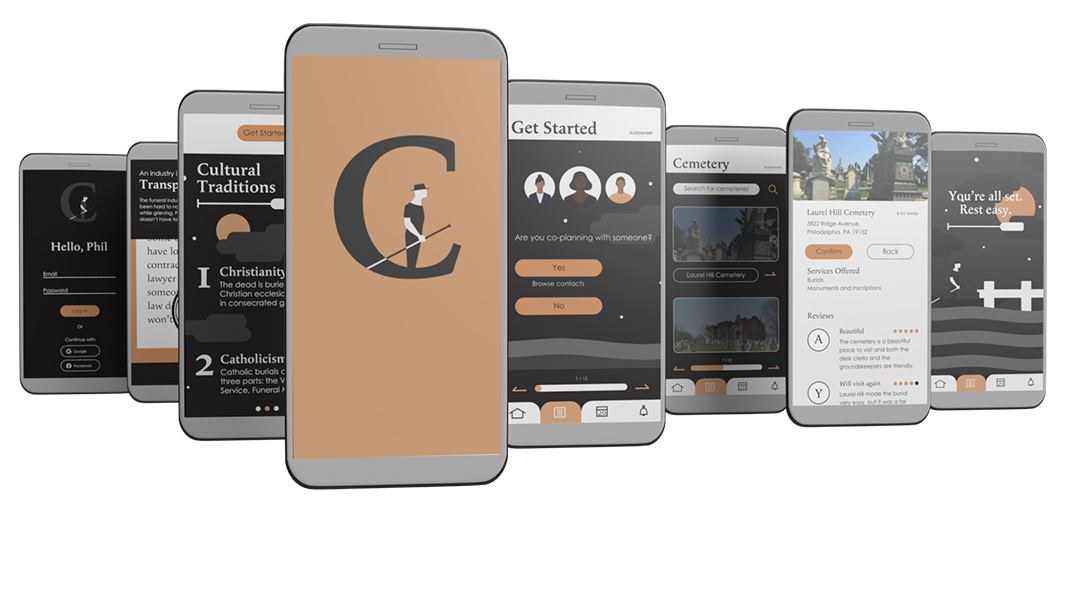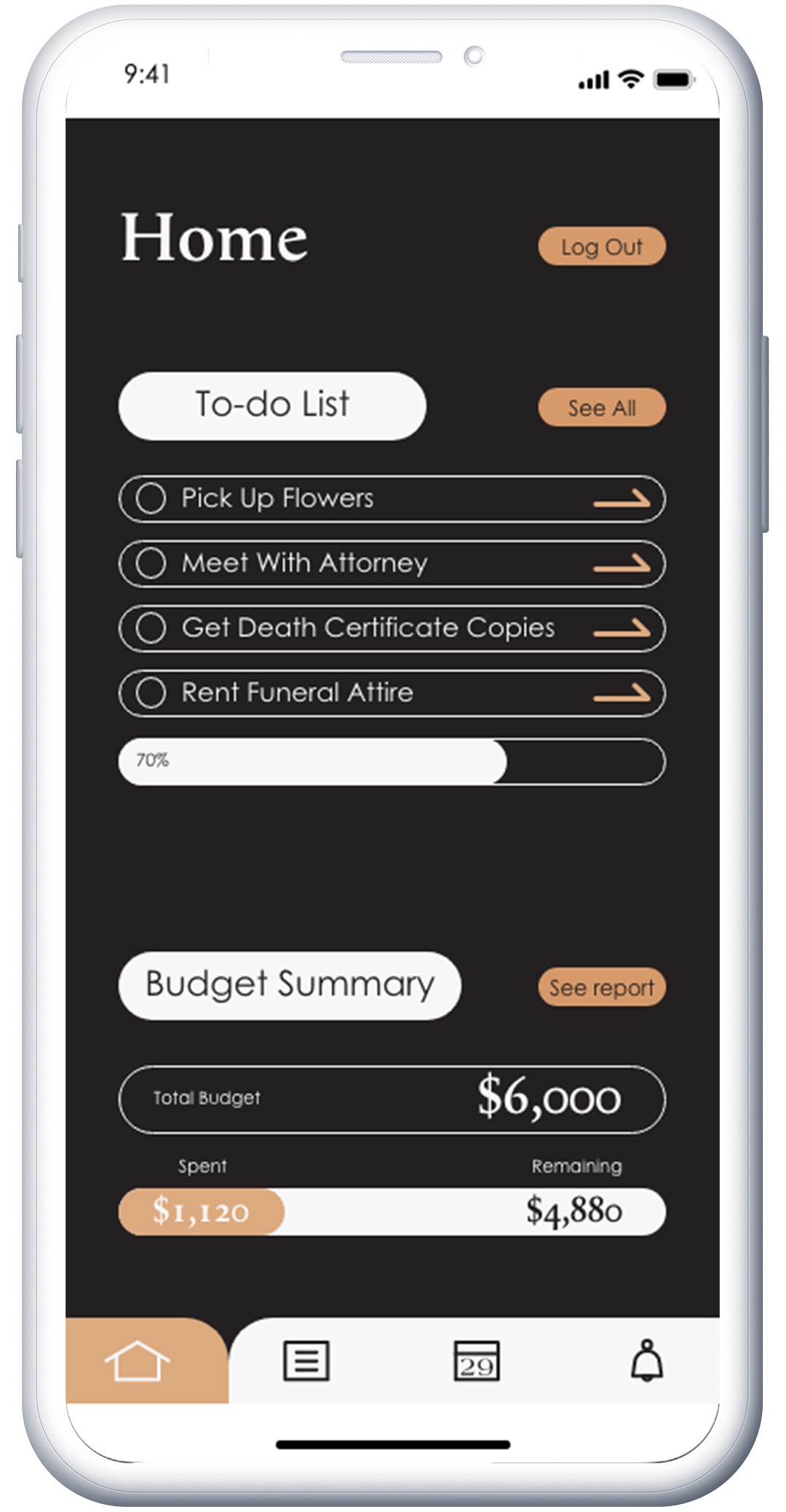
Charon (kair-uhn)
Project Type: UX Design / UI Design / Branding
Funeral Planning Made Easy
Instruction: Abby Guido
Institution: Tyler School of Art and Architecture, Temple University
Music: https://www.bensound.com/royalty-free-music
Introduction

An ambiguous industry
Funerals are a major event in people’s lives that require substantial planning. Planners need to search for and hire many different services. In addition to adding to the emotional burden of funeral shopping, exploitative sales practices contributes to an already rising cost. In 2012, the average funeral costed $7,000, but sharply rose to $9,000 in 2015. Funeral are getting more expensive, and little protects consumers. How can this process be more convenient and transparent?
National Funeral Directors Association (NFDA) Funeral Cost Statistics

The average cost of a funeral in 2012 increased by nearly 130% in the span of three years.
A personal project
In the summer, my grandmother passed away. At her funeral, I witnessed how difficult it can be to plan and execute a funeral. I focused on creating a solution in the form of an app. Named after the mythological ferryman on the River Styx, Charon is an app that focuses on making funeral planning more transparent and convenient. It suggests services based on preference and ways to hire them directly through the app. Users can easily keep track of funeral plans and to-dos.
Design
Plan a funeral where you're most comfortable
Personally tailored directories and event planning features are there to assist you when you need it most. Compare funeral-related services and stay on top of things on your own terms.
No more exhausting searches
A short series of questions will help you narrow down your search to only the most relevant services to honor your loved ones. Make a plan that works on your terms.
Animated User Flow with Transitions
Process
My research process started with secondary research into statistics and funeral planning itself. A survey also provided insight into if people had done this before, and if so, how much time and money they spent. To supplement qualitative data, a funeral director was interviewed to confirm consumer trends. The research pointed to an 3 target psychographics: planners who were inexperienced, short of time, and/or grieving. These user personas needed a convenient way to plan.
Competitor analyses of funeral planning apps already avalailable showed they only offer a limited number of tools or simply act as a database rather than a comprehensive service. Many do not focus on user experience.
Card sorting exercises were conducted with unprompted participants. Commonalities informed how the information architecture should be structured. After determining in what order users encountered various functions, a sample user path was laid out in the paper prototype.
Charon’s visual inspiration comes from multiple sources. Soft oranges paired with serious blacks allow for contrast that both follows WCAG 2.0 guidelines and promotes a soothing experience. Simple icons made from simple shapes are easily recognizable. A serif typeface was chosen for its soft tone and high legibility.
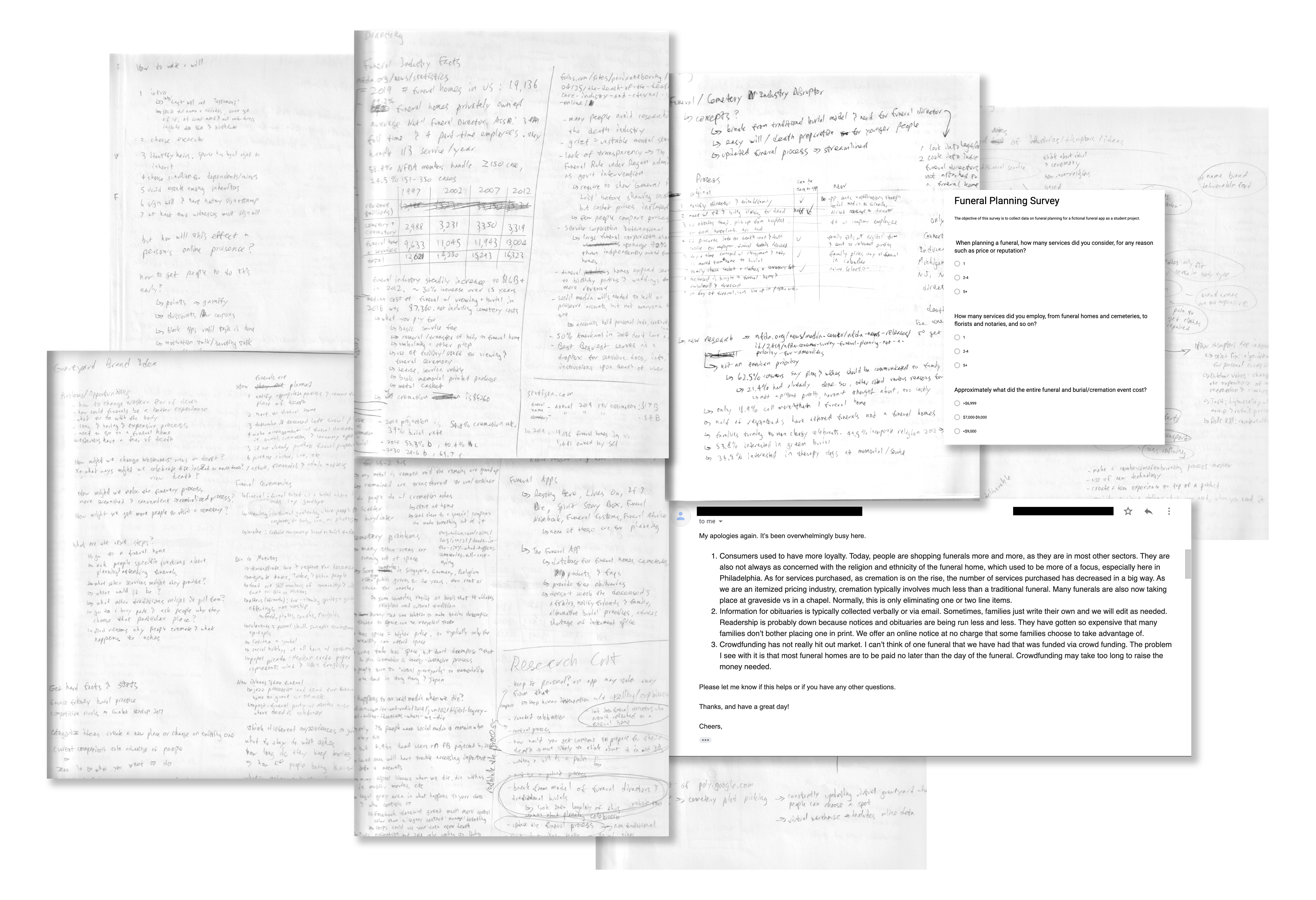

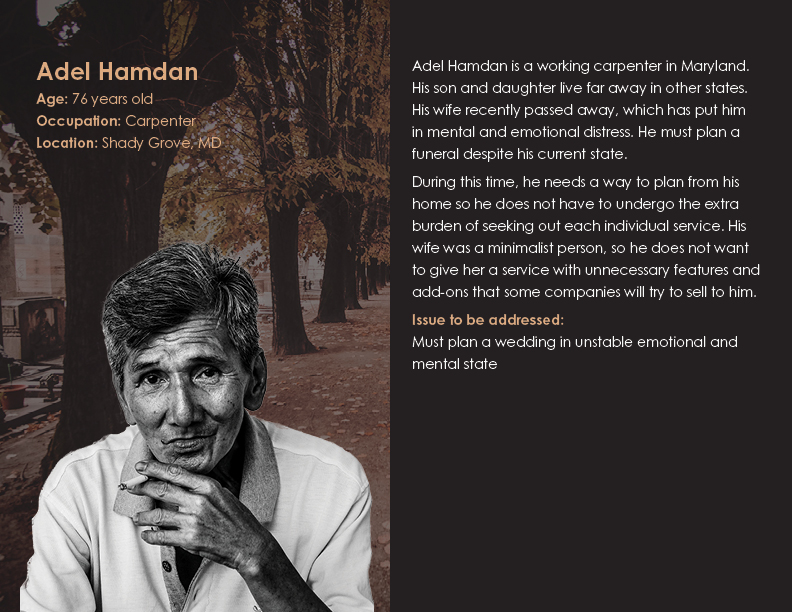
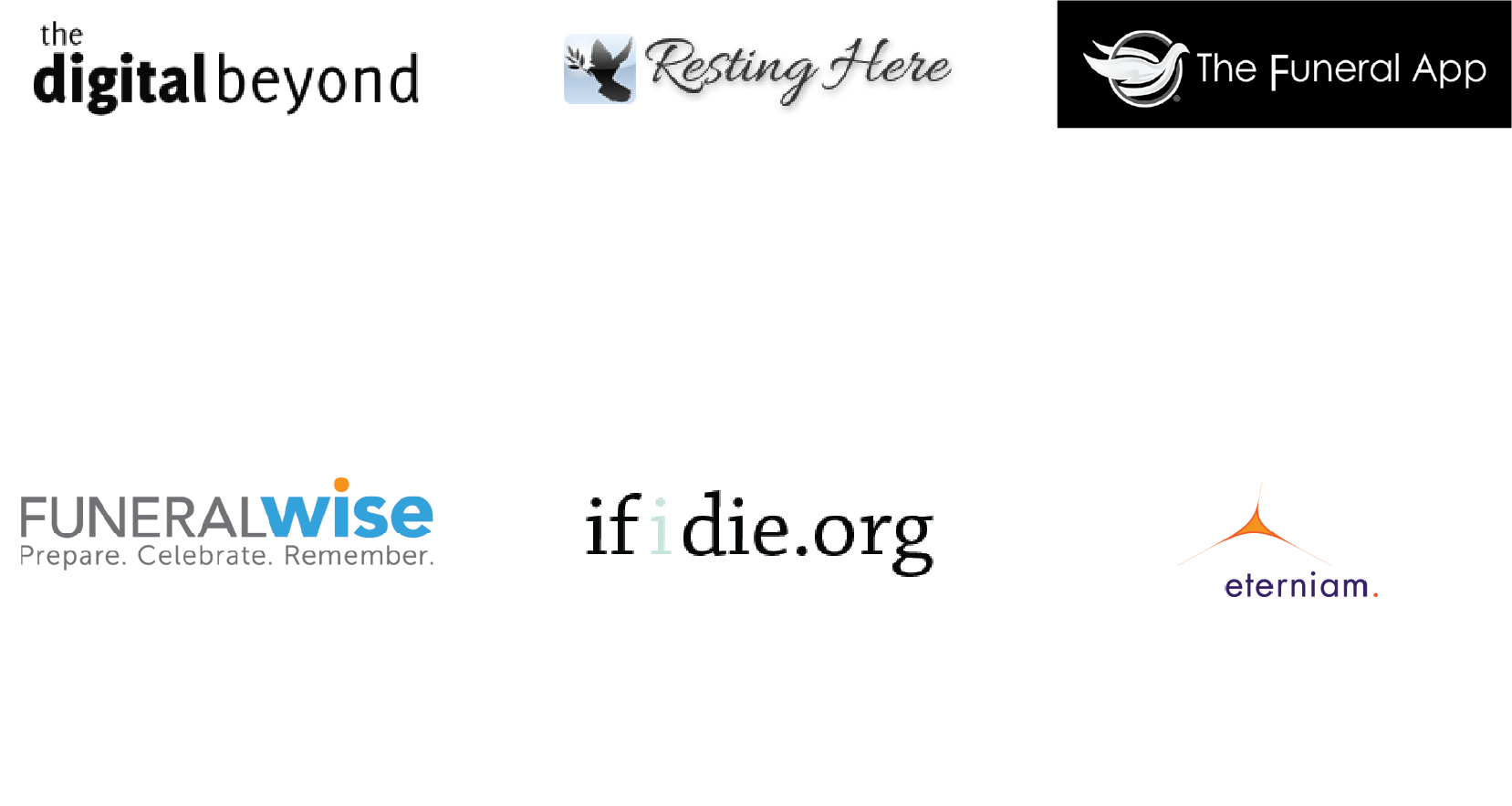

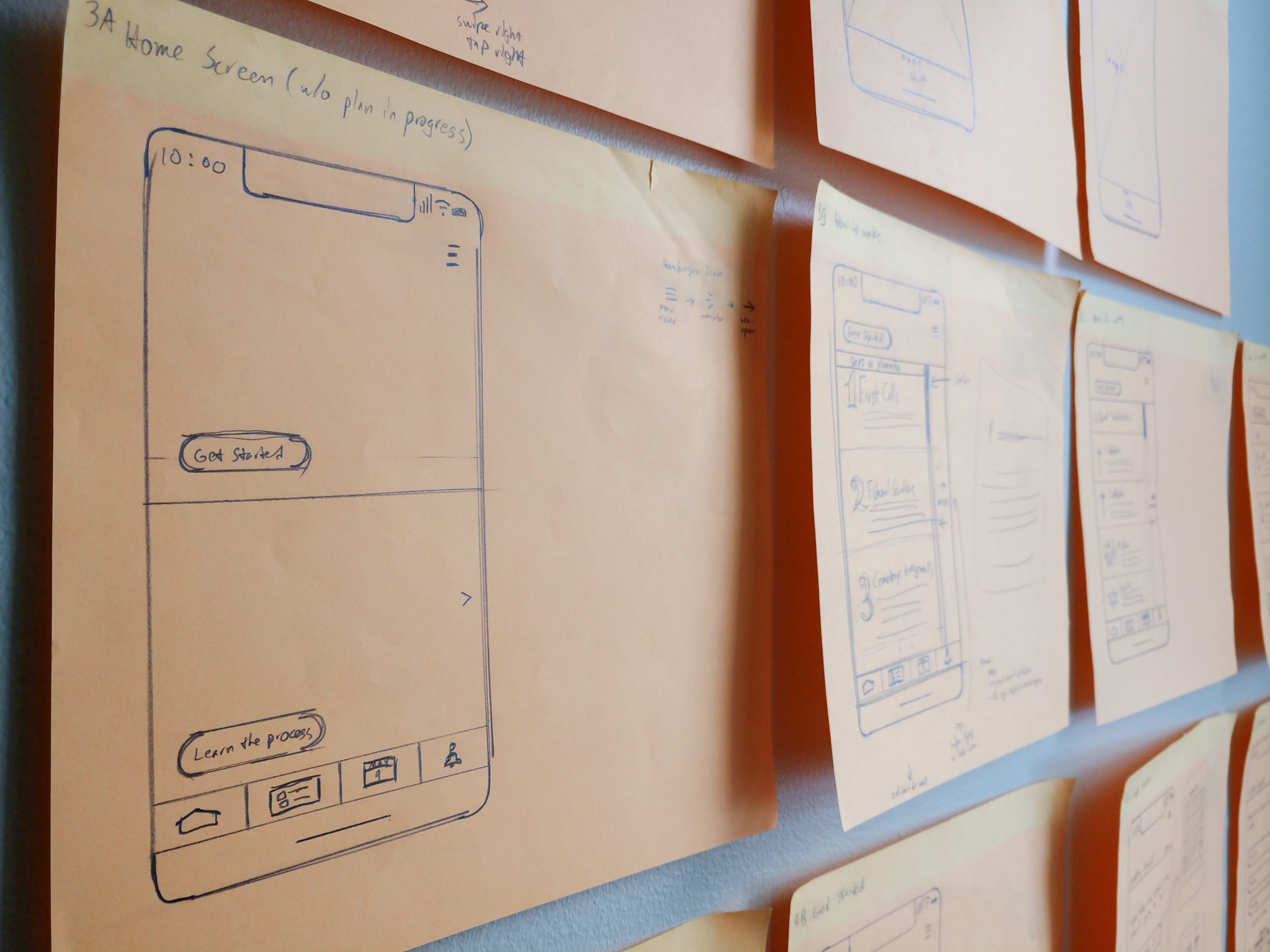

Moving Forward
Working on Charon has been a grueling, but gratifying process. It required me to be uncomfortable in its deep dive into a subject most of us prefer not to think about. It taught me how to conduct research in a design context, how to design for user experience, and most importantly, how to better empathize with funeral planners. And on top of that, I feel more prepared to plan one myself when the time comes.
Sources
Boring, Perianne. (2014, April 25). Death Of The Death Care Industry And Eternal Life Online. Forbes. https://www.forbes.com/sites/perianneboring/2014/04/25/the-death-of-the-death-care-industry-and-eternal-life-online/#1ae0e2831c1a
De Sousa, Ana Naomi. (2015, Jan 21). Death in the city: what happens when all our cemeteries are full? The Guardian. https://www.theguardian.com/cities/2015/jan/21/death-in-the-city-what-happens-cemeteries-full-cost-dying
Mazareanu, E. (2019, July 10). Number of funeral homes in the United States from 2004 to 2019. Statista. https://www.statista.com/statistics/882963/number-of-funeral-homes-in-the-united-states/.
NFDA. (2019, July 18). Statistics. National Funeral Directors Association. https://nfda.org/news/statistics
Nobel, Justin. (2013, September 13). Five Awesome Funeral Apps. Digital Dying. https://www.funeralwise.com/digital-dying/five-awesome-funeral-apps/
Schwartz, Brett. personal communication, October 19, 2019.
Tait, Amelia. (2019, June 2). What happens to our online identities when we die? The Guardian. https://www.theguardian.com/tv-and-radio/2019/jun/02/digital-legacy-control-online-identities-when-we-die

